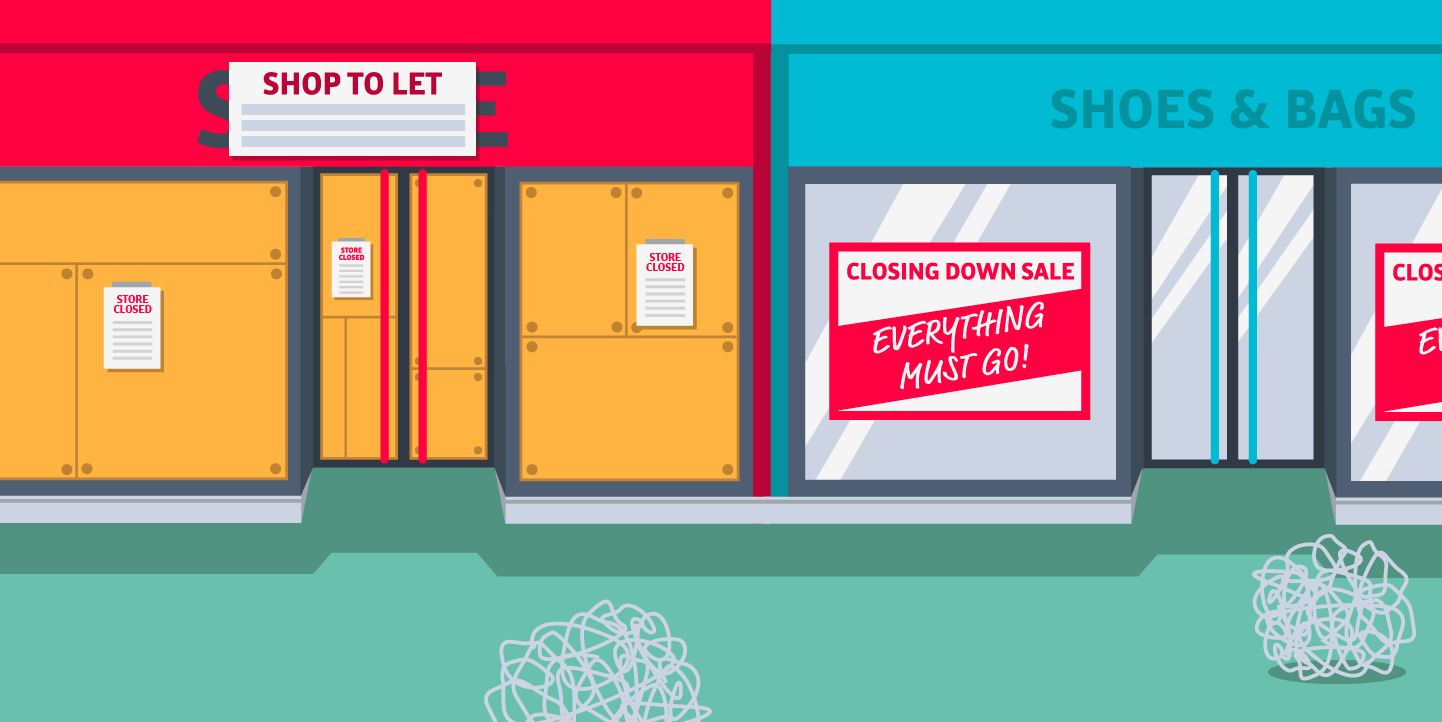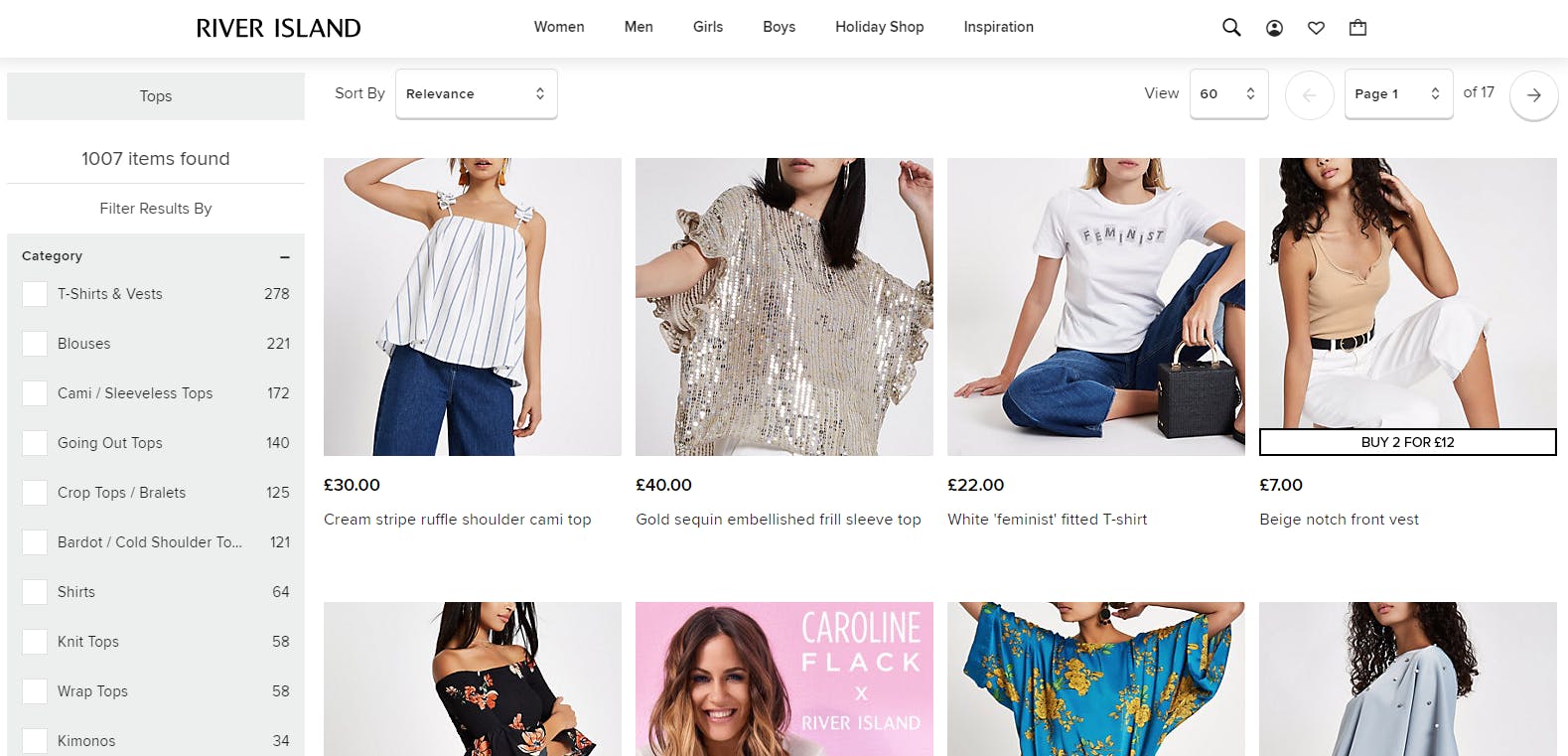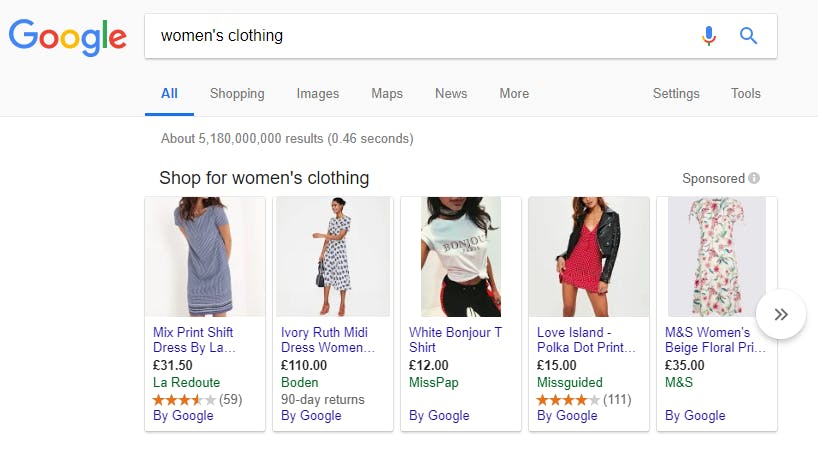Before House of Fraser, food and clothing stalwart Marks & Spencer was the focus of attention after an announcement that it would be closing 100 stores across the UK amid falling sales and profits.
Other high street brands that have sought and signed CVAs in the past three months alone include fashion retailers Select and New Look, mother and baby brand Mothercare, and home fittings retailer Carpetright.
Fears are widespread that these brands will go the way of Maplin, Toys R Us and BHS, each one a former staple of UK retail which has fallen into administration in the past two years.
It’s no secret that the decline of the UK high street is due to a failure on the part of high street brands to keep up with the digital age. Online sales are continuing to increase as a percentage of retail spending: the Office for National Statistics reported in April that online sales accounted for 17.3% of all retail, up from 16.1% the previous year.
High street retailers are facing stiff competition from online-only brands such as ASOS, boohoo and Ocado, all of which are reporting strong growth as their high street counterparts close their doors. It’s little wonder, then, that ecommerce is often accused of “killing” the high street.
But ecommerce doesn’t have to be the enemy for high street retailers. In fact, there are a number of online strategies that retailers could employ that will complement – not detract from – their in-store business, and the brands that are implementing these strategies are already faring better than most.
Here are some of the ways that the UK’s high street brands could bolster their online strategies to improve their fortunes.

Embracing omnichannel
Not every single high street retailer is suffering in the age of ecommerce. A few notable names have managed to weather the transition to the digital era relatively well, and by and large, they’ve done so by employing omnichannel strategies.
An omnichannel retail strategy is one that treats every channel that the retailer is present on – its physical stores, catalogues and directories, digital presence across different devices, social media, and any other online or offline outlets – as one, seamless experience.
Omnichannel retail acknowledges the reality that customers shop across a whole range of different channels, often starting their customer journey on one channel and completing it on another.
It’s often conflated with multichannel retail, which merely refers, more practically, to selling online and offline (e.g. via stores, websites and marketplaces). As B&Q’s director of omnichannel told Econsultancy in an interview,
“For us [omnichannel is] about going beyond multichannel and really putting ourselves in the shoes of our customers, because consumers don’t interact with channels – they interact with brands.
So rather than putting the choices of channels in front of the customer we try to understand what the customer wants and deliver that through all of our channels.”
How does this work in practice? Let’s look at some high street brands that have been doing omnichannel retail effectively.
River Island
River Island is one notable success story from the UK high street. The London-based high street fashion brand has embraced digital transformation and omnichannel retail, and as a result is still privately-owned and going strong since its foundation in 1948. In 2016, the brand pulled in close to £1 billion in sales, with a 30% increase in ecommerce sales the year before, and a 40% increase in click-and-collect orders.
River Island has a dedicated digital office in Shoreditch, and Fashion Network reported last year that the company has committed to doubling its size, as well as tripling the size of its technology team in a bid to prioritise ecommerce.

River Island’s online shop
Some of the specific measures that River Island has implemented include allowing customers to use their phones when they arrive in a shop, in order to let staff know they’re there to collect an online order. It is also developing a way for customers to scan in-store items with their mobile phones to check colour and size availability in that shop, and in nearby outlets.
“The customer expects a more connected journey now, whether online or in-store, so we need to ensure we provide that experience,” Doug Gardner, River Island’s CIO, told V3 in an interview.
To that end, in May last year the brand hired a head of customer experience, Tim MacIvor, to oversee the broader view of the customer journey across all channels, and make sure that the experience of shopping across them is as seamless as can be. (N.B. Tim MacIvor will be speaking at Festival of Marketing 2018, October 10-11 in London)
Staff have also been equipped with Android devices on the shop floor which contain the new store system, allowing them to carry out back-office functions, like updating stock information, from the shop floor. A relatively simple step like this has afforded River Island with a huge boost in productivity, as staff are already comfortable with using mobile devices, and very little training is needed to use them.
John Lewis
John Lewis has also made a concerted effort to join up its various channels in order to better track products and orders end-to-end. The brand encourages consumers to shop across multiple channels, for example by providing in-store wi-fi that allows customers to try their items in-store and then buy them online, or even compare their prices with other retailers as they shop.
Its click-and-collect strategy (which former CIO Paul Coby claims that John Lewis invented) has served it particularly well, overtaking home delivery in popularity at the end of 2014.
Boots
Boots is another high street brand that has earned plaudits for its innovative omnichannel approach. Speaking to Retail Connections, Boots’ former director of omnichannel Robin Phillips said that it’s important for the brand to have a memory of customers’ interactions across channels and demonstrate that it has understood the whole journey, for example by having staff acknowledge when and how a click-and-collect order was placed when the customer comes to pick it up.
However, he believes that retailers should “act like a butler and not a stalker” when it comes to data collection and personalisation – for example, suggesting other products that will appeal to a customer based on their past orders. In-store, staff use tablet devices to bridge the gap between the digital and the physical worlds and ensure they have access to all the relevant information.
Phillips also argues that it’s important for both the online and offline sides of the business to be joined-up behind the scenes as well, measuring the same KPIs and talking about the same targets.
Omnichannel takeaways
Based on these examples, here are some takeaways on executing an effective omnichannel strategy:
- Omnichannel means seeing all channels as equally important and complementary to the business, and approaching strategy with the assumption that customers will be shopping across many different channels in the same journey.
- It also involves making sure they are joined up seamlessly – for the consumer and also for the business itself. At the risk of sounding hopelessly clichéd, businesses need to break down silos by ensuring that different departments of the business communicate with one another, not just internally, and share goals and targets.
- Retailers can use technology to enhance the in-store experience and bring the online store offline. This doesn’t have to involve flashy, expensive innovations like augmented reality changing rooms; it can be as simple as equipping floor staff with mobile devices, and making sure their knowledge of the company’s online experience is as in-depth as their knowledge of offline.

Distributed commerce
A retailer’s website isn’t the only place that it can offer its wares online. Increasingly, a retailer’s product feed – a data file that lists a retailer’s products and their attributes – can be used to ‘set up shop’ in different places online, allowing retailers to reach a wider range of customers and drive more sales.
Samuel Dean, founder and CEO of Pricesearcher, a search engine specialising in price data, explained to me how this works, and why it’s so important for retailers to make use of their product feed as part of their online strategy.
“To really turn around their business, high street retailers need to adopt one key strategy to begin with: to increase the reach of their products online,” said Dean. “How far have their products been distributed across the internet? They can’t be precious about waiting for the customer to come to them – they need to go to where the customers are.
“This is an old strategy when it comes to digital marketing, but I’m referring to something more than marketing – I’m talking about distributed commerce.”
Distributed commerce is a concept that, like omnichannel, acknowledges that customers are shopping across more channels and coming into contact with retailers in more places than ever before, and aims to make products available to them wherever they might be.
“Every retailer that has an online presence has a product feed – a technical existence of all of their products inside their own ecosystem,” Dean explained. “What they need to do is prepare that product feed for distribution, by exporting it and putting it in a format that allows it to be placed in every possible location.
“That way, no matter where consumers might be shopping, they can still see and browse products belonging to those retailers. The best online players are the ones who do this.
“Retailers can put their product feeds into marketplaces, they can put them into affiliate agencies to drive traffic to wide publisher networks, they can put them into price comparison sites, they can put them onto Amazon and Google Shopping, and of course, they can put them onto Pricesearcher.”

Google Shopping. Google has recently included product ads in image search, too, distributing these products still further.
Dean emphasises that, although it might sound technical, exporting a retailer’s product feed is a very straightforward task. “Out of all the work that is involved in putting an online platform together, this is one of the easiest things to do.” Agencies exist who specialise in helping retailers to prepare their product feeds for distribution in different formats, and typically charge a modest monthly fee for the work.
Which high street brands has Dean encountered that are particularly good at distributed commerce? “John Lewis does this well, as does Ikea, and a lot of builder’s merchants like Screwfix are good at distributing their products both in stores and online. They have concentrated digital teams and expertise that are designed to drive that mission forward.”
For a pure-play online retailer who can concentrate their entire strategy on ecommerce, expanding into additional online outlets probably isn’t too much of a stretch. But for a high street retailer who is already managing retail strategy across a range of branches and online, this might seem like a lot of balls to keep in the air. I asked Dean how retailers should approach the challenge of juggling so many different channels.
“Retail brands are going to have a team that manages their offline retail, and a team that manages the online. The online team typically sits within the digital marketing team. These guys will already be able to work with different sources of traffic – so if you consider an online shop, the digital marketing team will want to know where users are visiting their site from.
“If a product feed is present in lots of different locations, it’s the same management style to understand where the sales are coming from, who is driving the traffic and who isn’t.
“In fact, it’s the same mentality that applies to offline – a high street retailer needs to be present on the best streets and in the best locations to drive maximum footfall. If anything, I would argue that it’s harder to open up an offline store – you’ve got to manage logistics, delivery of products, driving the user to the store. A lot more work would go into that than needs to go into digital strategy.”
Even with that said, for high street retailers to start pursuing a distributed commerce strategy online, they will still need to make an up-front investment of time, energy and money, and in some cases, change their whole mentality with regards to ecommerce. How can they be sure that it will pay off?
“The same risk-benefit calculations that a brand makes when deciding to open up a new high street store also apply online – except that online is actually more transparent,” says Dean. “Users’ habits online are quite well-known.
“In fact, if a shopper is walking down a high street, there could be any number of reasons why they’re walking along that street; they might not necessarily be there to buy. But on a shopping platform, the intent of those users is absolutely known. So there’s actually less risk in that respect.
“As for the reward – Pricesearcher, as a search engine, is still in beta, but we’ve already seen that users are making an average of four and a half visits to retailers each time they use the search engine.
“And we have about £5 million worth of product click-outs” – traffic to retailers that is driven by Pricesearcher – “that happen per month. Some retailers have received upwards of £9 million of product click-outs that have converted to sale at 1.5%. So that’s the evidence.”
What does the future hold for high street retail?
The story of the struggling high street is not a new one; high street brands have been suffering for years. The brands that are named in this article are just the latest to have fallen on hard times, though perhaps at a slightly faster rate than before.
Nor are any of the solutions proposed here new – omnichannel and distributed commerce are both established concepts, though new tools certainly exist now to take advantage of them, and the success of retailers who have employed these strategies stands as evidence of how effective they are.
The future of high street retail doesn’t have to be bleak. In fact, the knowledge and experience that comes from managing hundreds of different locations can give high street retailers the edge in the digital age – even over pure-play ecommerce brands.
“In my opinion, it gives them an additional advantage,” says Samuel Dean. “Because they have the store networks. If retailers can join up their online and offline presences, they can use the assets from both. They can offer click-and-collect, they can offer online shopping, customers can come in-store and experience the products for themselves – there are so many more options.
“This, for them, is an opportunity. The question retailers need to ask is: How much of that opportunity are they taking up?”
For everything you need to get up to speed with ecommerce strategy, attend Econsultancy’s Fast Track to Ecommerce training course.

Comments